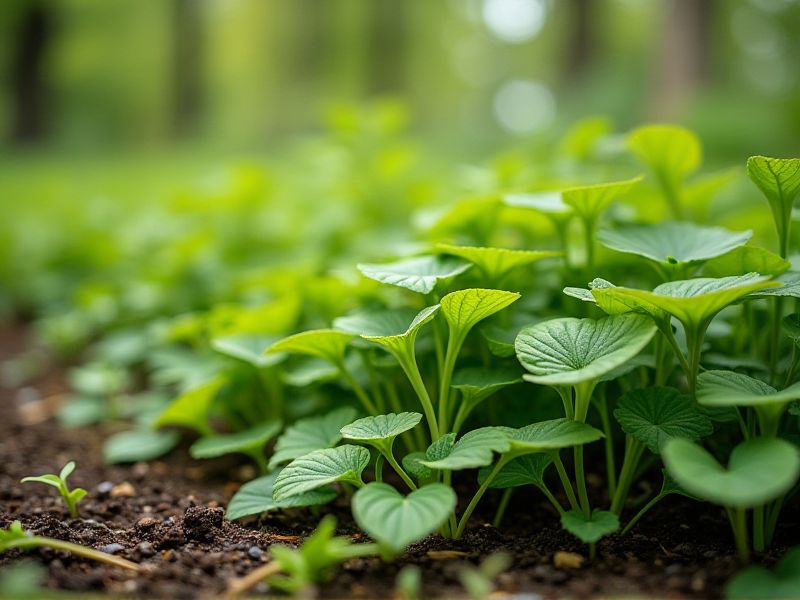
Waterwise plants, such as succulents and native drought-resistant species, are designed to thrive with minimal water input. These resilient plants have adapted to arid environments, featuring adaptations like thick leaves that store moisture and deep root systems that access underground water. Popular examples include agaves, lavender, and ornamental grasses, which not only require less irrigation but also enhance garden aesthetics. By incorporating these plants into your landscaping, you can reduce water consumption while promoting biodiversity. Choosing waterwise plants supports sustainable gardening practices, making a positive impact on your local ecosystem.
List of some Waterwise plants that conserve resources
- Lavender (Lavandula)
- Agave (Agave americana)
- Yarrow (Achillea millefolium)
- Sedum (Sedum spp.)
- Russian Sage (Perovskia atriplicifolia)
- Red Yucca (Hesperaloe parviflora)
- Coneflower (Echinacea purpurea)
- Rockrose (Cistus)
- Blue Fescue (Festuca glauca)
- California Poppy (Eschscholzia californica)
Important things about Waterwise plants that conserve resources
Low Water Requirements
Waterwise plants, such as succulents, lavender, and native grasses, are specifically chosen for their ability to thrive in arid conditions while minimizing water usage. These drought-resistant species utilize specialized adaptations like deep root systems and thickened leaves to store moisture and survive long periods without rainfall. By incorporating these plants into your landscaping, you can significantly reduce irrigation needs and conserve valuable water resources. Embracing waterwise gardening not only promotes sustainability but also encourages the growth of vibrant and resilient ecosystems in your outdoor spaces.
Drought Tolerance
Waterwise plants are specifically cultivated to thrive in arid environments while minimizing the need for excessive water. These species, including succulents like agave and native grasses such as blue grama, are adapted to conserve moisture through specialized structures like thick leaves and deep root systems. By integrating waterwise plants into your landscape, you contribute to sustainable gardening practices that reduce water consumption and promote biodiversity. Selecting these resilient plants not only enhances the aesthetic appeal of your garden but also supports local wildlife and improves soil health.
Native Adaptability
Waterwise plants, such as succulents, native grasses, and drought-resistant perennials, are essential for conserving water resources in landscaping. These plants have evolved unique adaptations, such as deep root systems and waxy leaf surfaces, enabling them to thrive in arid conditions while minimizing water loss. Incorporating native varieties, like California poppies or lavender, not only conserves water but also supports local ecosystems by providing habitats for wildlife. By choosing waterwise plants for your garden, you can create a sustainable landscape that requires less irrigation and contributes to environmental conservation.
Soil Improvement
Waterwise plants are essential for improving soil health while conserving precious water resources. By selecting drought-tolerant species such as lavender, succulents, and native grasses, you can enhance soil structure and promote biodiversity. These plants require less irrigation, reducing water consumption and contributing to sustainable landscaping practices. Incorporating organic mulch around these plants not only helps retain moisture but also enriches the soil as it breaks down over time.
Minimal Fertilization Needs
Waterwise plants, such as succulents and drought-tolerant perennials, require minimal fertilization, making them ideal for resource-conserving gardens. Native species, like lavender and sage, thrive in arid conditions, reducing the need for excess nutrients while flourishing with minimal maintenance. Incorporating these plants into your landscape not only conserves water but also supports local ecosystems by providing habitats for pollinators. By selecting waterwise plants, you can create a vibrant garden that requires less fertilizer, ultimately promoting sustainability and resource efficiency.
Pest Resistance
Waterwise plants, known for their resilience against drought and pests, play a vital role in sustainable gardening. These native or adapted species require minimal irrigation, making them ideal for conserving water resources in arid climates. Many waterwise plants possess natural pest resistance traits, allowing them to thrive without the need for chemical pesticides. Incorporating these plants into your landscape not only supports local ecosystems but also reduces maintenance efforts and environmental impact.
Seasonal Interest
Waterwise plants are specifically selected for their ability to thrive in dry conditions while requiring minimal water, making them an excellent choice for sustainable gardening. Species such as succulents, native wildflowers, and drought-resistant shrubs not only reduce water consumption but also enhance biodiversity in your landscape. Implementing these plants can lead to lower maintenance costs and a reduction in utility bills, ultimately saving you money. By choosing waterwise plants, you contribute to water conservation efforts and create a vibrant outdoor space that supports local wildlife.
Biodiversity Support
Waterwise plants are essential for promoting biodiversity while conserving vital resources in your garden or landscape. These drought-tolerant species, such as succulents, native grasses, and ornamentals, thrive with minimal water, reducing the reliance on irrigation. Moreover, they attract a variety of pollinators and beneficial insects, fostering a balanced ecosystem. By incorporating waterwise plants, you contribute to sustainable gardening practices that preserve natural habitats and enhance the resilience of local wildlife.
Climate Resilience
Waterwise plants play a crucial role in promoting climate resilience by minimizing water usage while enhancing biodiversity. These drought-tolerant species, such as succulents, native grasses, and various perennials, are designed to thrive in arid conditions, making them ideal for sustainable landscaping. By incorporating waterwise plants into your garden, you not only conserve precious water resources but also provide habitat for local wildlife, supporting an ecosystem that adapts to climate change. Choosing these hardy plants can significantly reduce irrigation needs, ultimately leading to lower water bills and a healthier environment.
Reduced Maintenance Demands
Waterwise plants, specifically those native to arid climates, thrive on minimal water, making them ideal for sustainable gardening. By selecting species like succulents and drought-resistant perennials, you not only reduce water usage but also lower maintenance requirements, allowing for more leisure time in your garden. These plants often have adaptations such as deep root systems and waxy leaves that enable them to survive prolonged dry spells. Incorporating Waterwise plants into your landscape not only promotes environmental conservation but also enhances the aesthetic appeal of your outdoor space.
